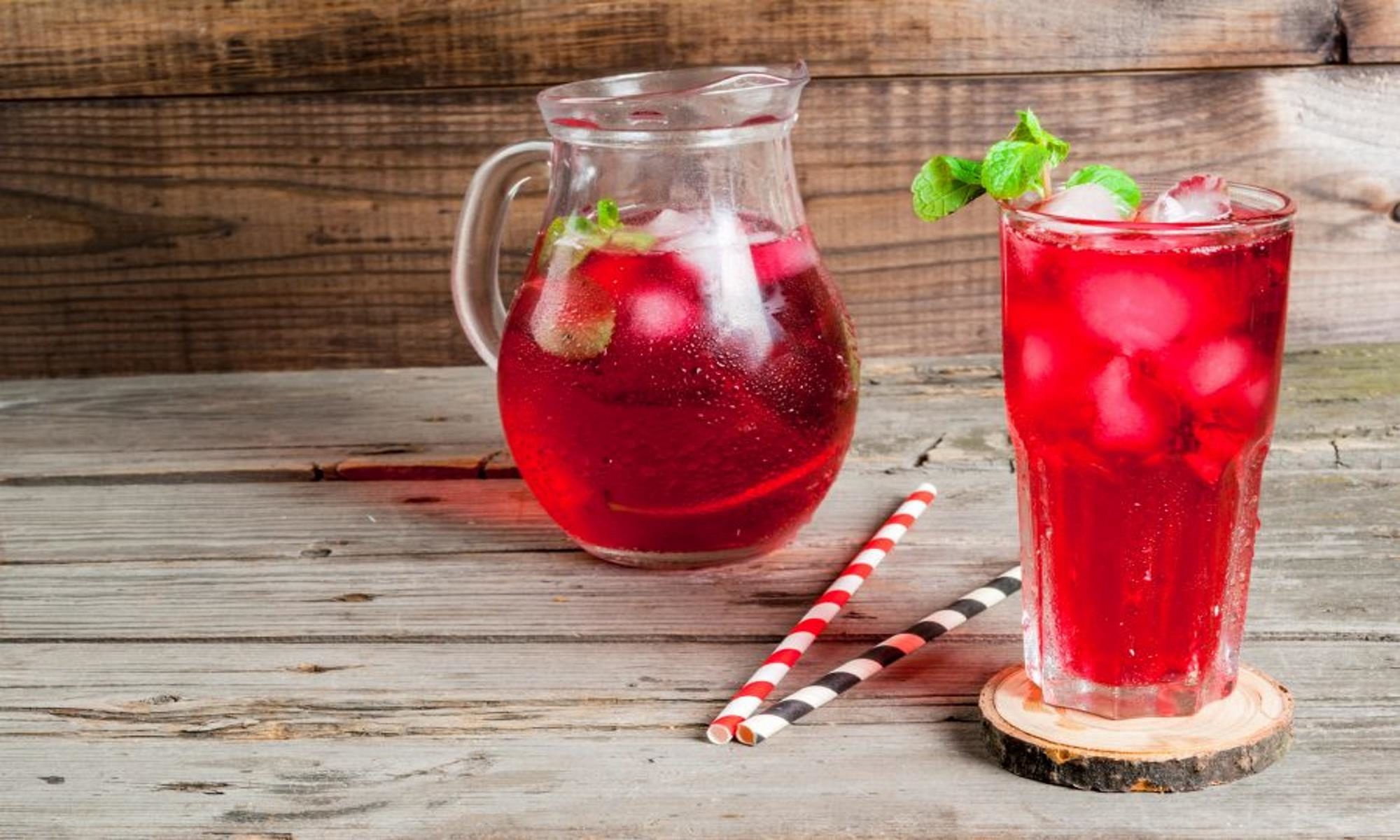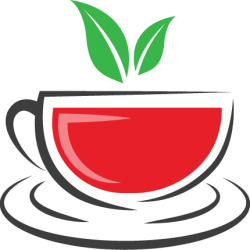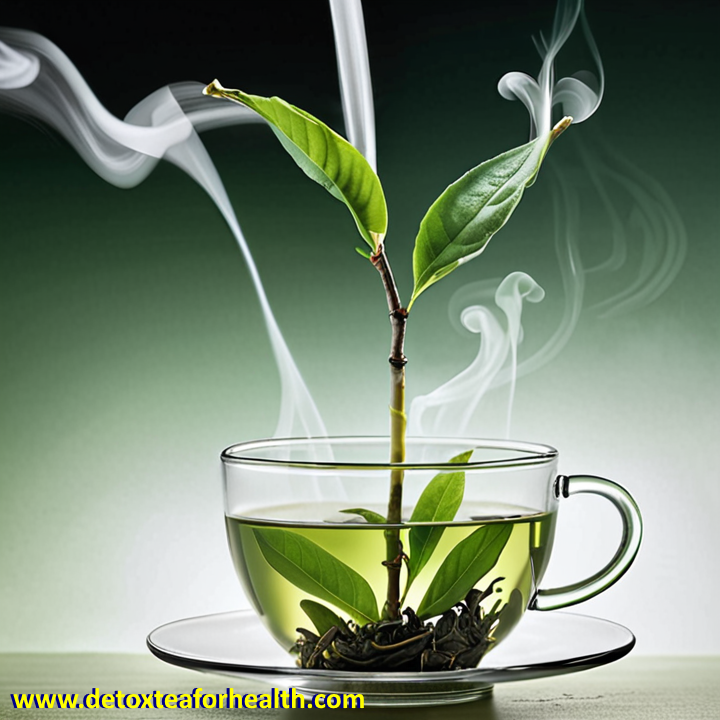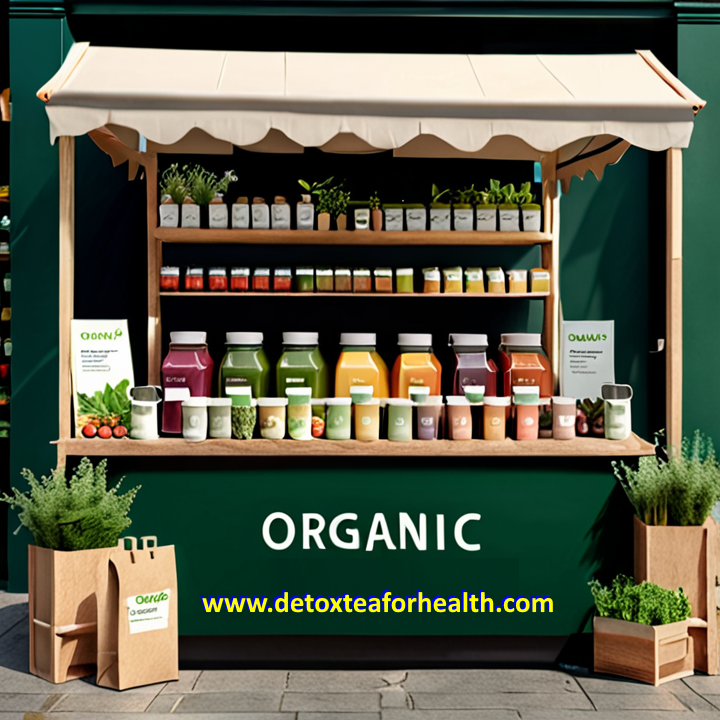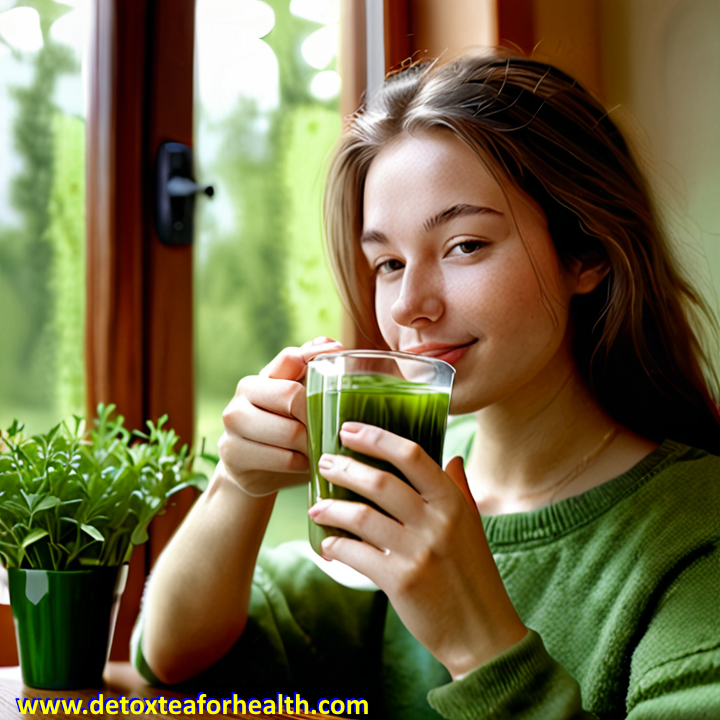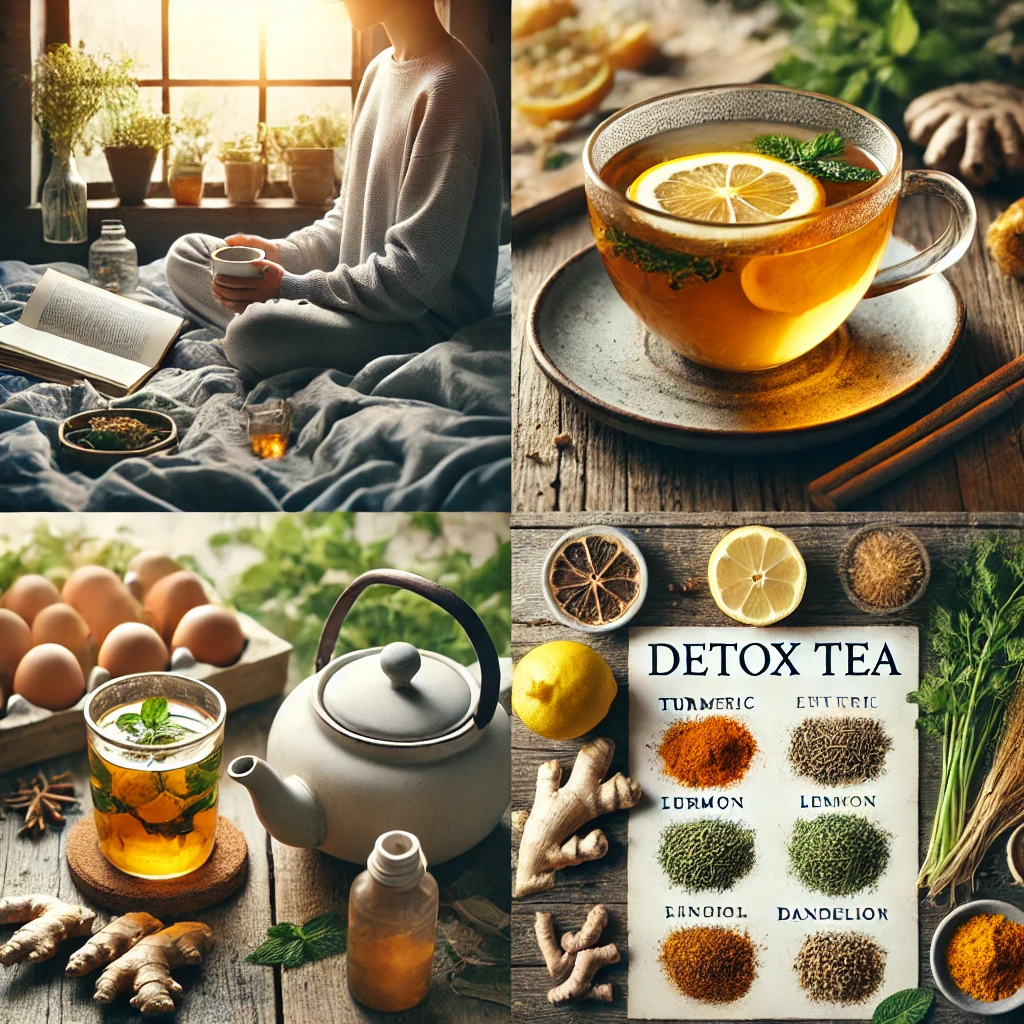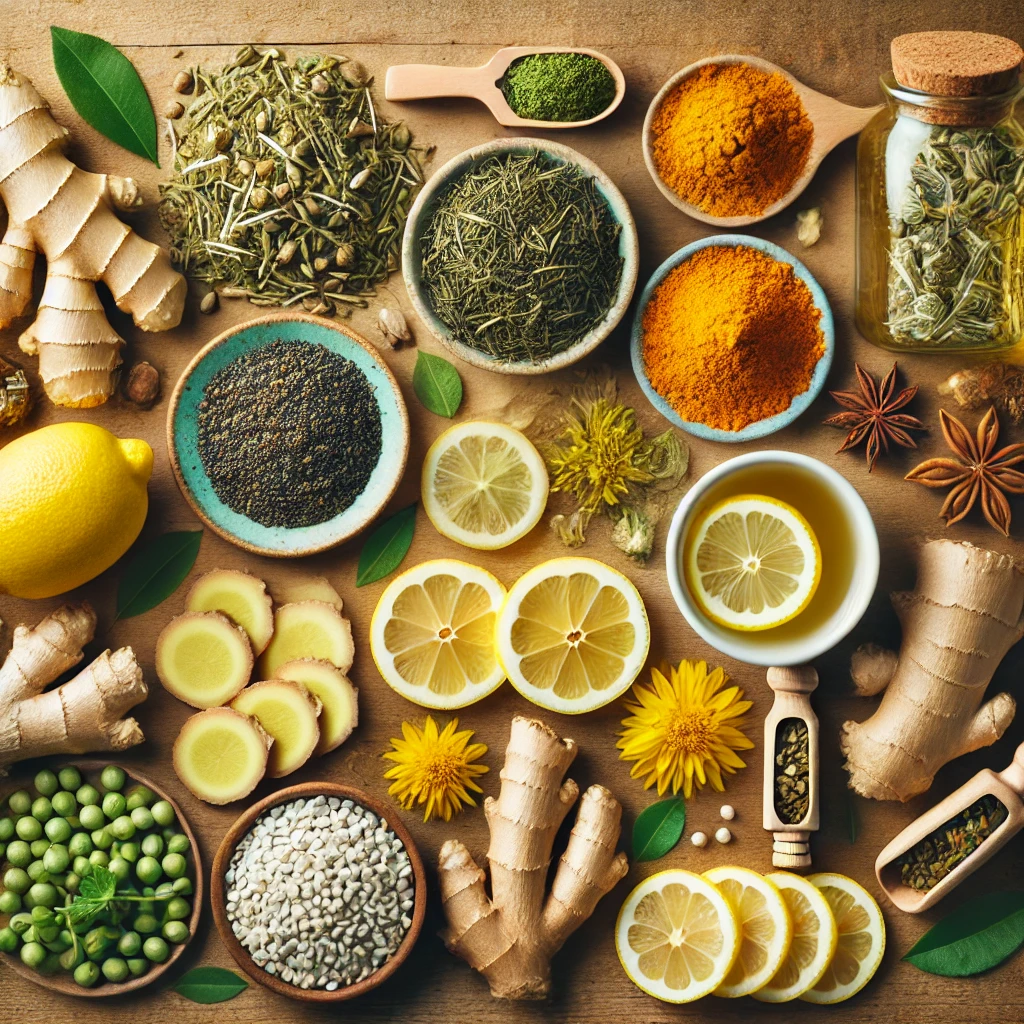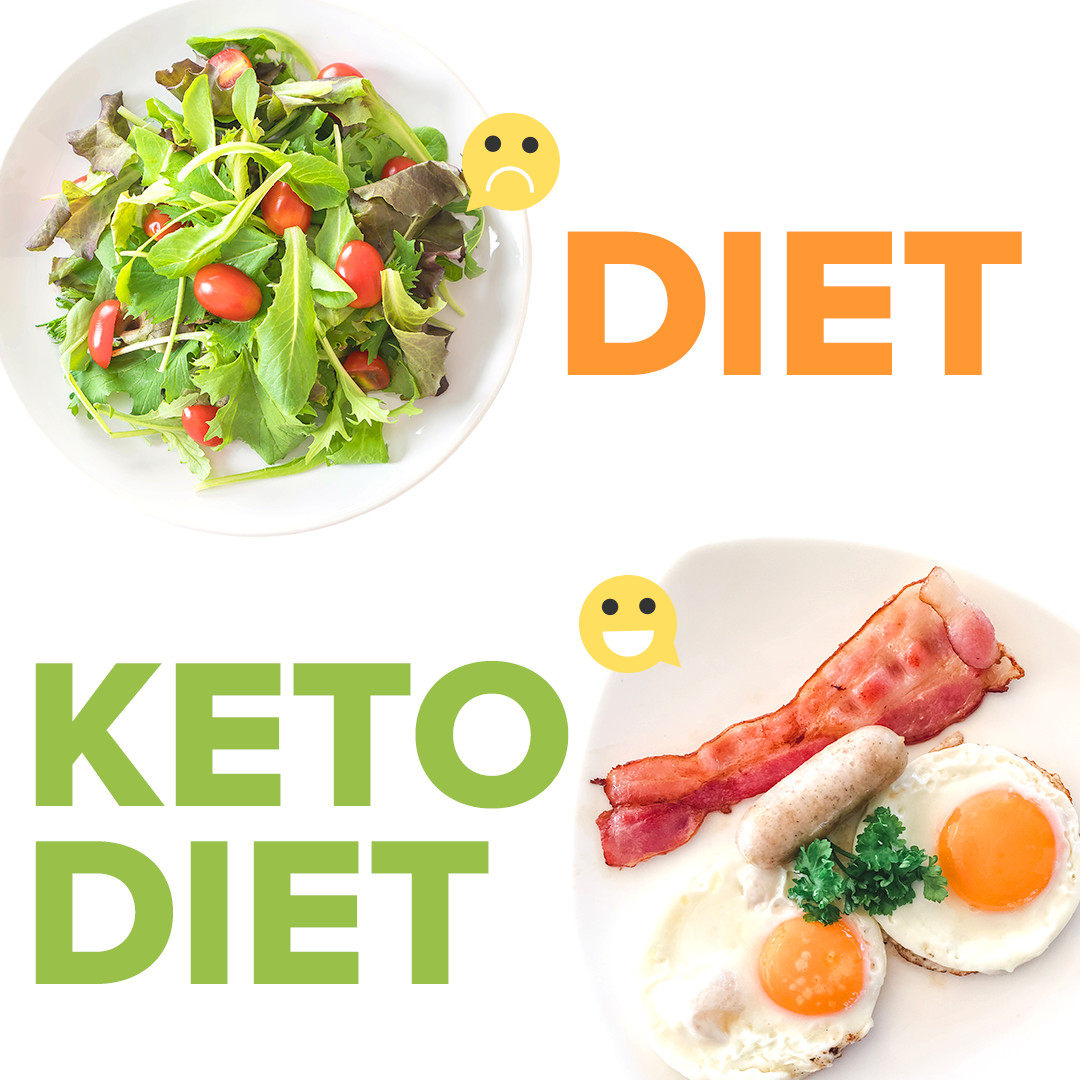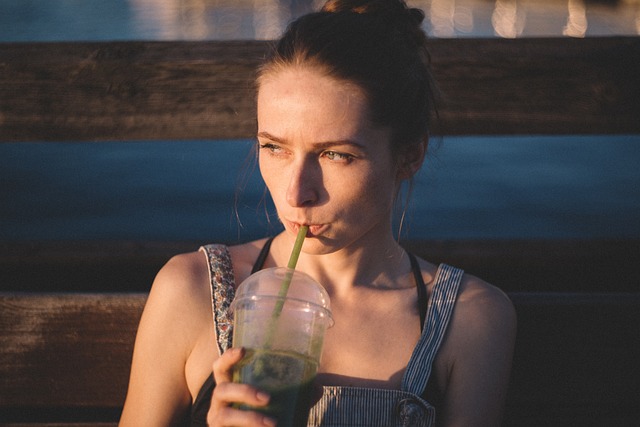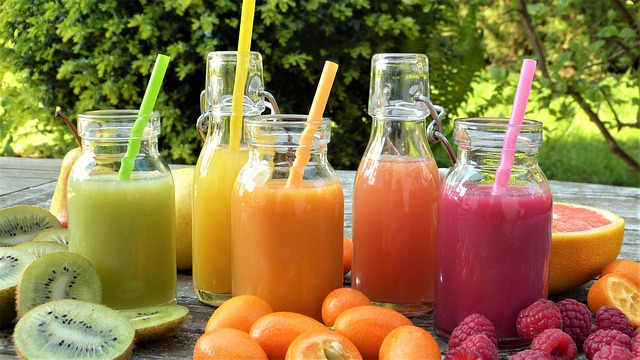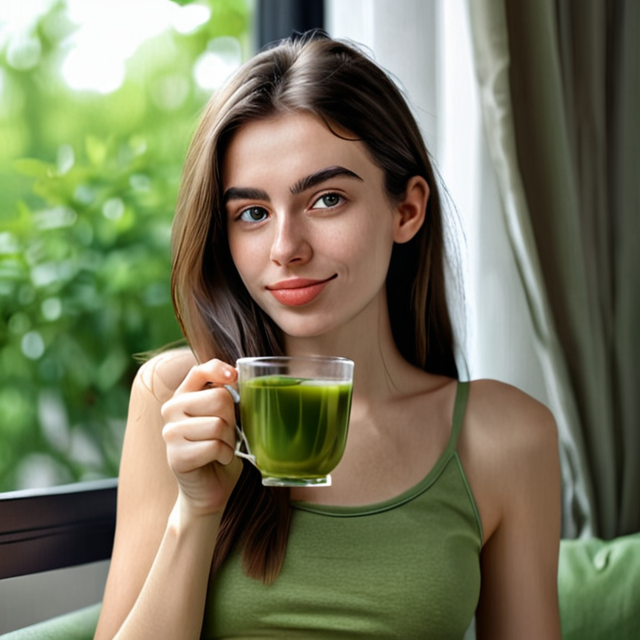
What are some effective strategies for maintaining a healthy weight?
Maintaining a Healthy Weight: A Comprehensive Guide to Strategies
In today’s fast-paced lifestyle, it can be challenging to find the time and energy to maintain a healthy weight. However, with a few strategic approaches, you can develop a sustainable plan that promotes long-term health and wellness. Here are some effective strategies for maintaining a healthy weight:
1. Set Clear, Achievable Goals Setting realistic goals is crucial for any weight management journey. Start by determining your ideal body weight based on factors such as height, age, gender, and overall health. Break this goal into smaller, manageable steps. For instance, if you want to lose 20 pounds over six months, break it down into losing 4 pounds per month.
2. Create a Balanced Diet A balanced diet is the foundation of weight management. Focus on nutrient-dense foods like fruits, vegetables, lean proteins, and whole grains. Avoid processed foods, sugary drinks, and excessive amounts of saturated fats. Plan your meals in advance to ensure you have healthy options available throughout the day.
3. Stay Hydrated Drinking plenty of water is essential for weight management. It helps boost metabolism, reduces hunger, and can prevent overeating. Aim for at least 8 glasses of water per day, but listen to your body and drink more if needed.
4. Practice Mindful Eating Mindful eating involves fully concentrating on the food you eat, savoring each bite, and enjoying the taste and texture. This approach helps reduce mindless overeating and promotes better digestion.
5. Get Enough Sleep Sleep plays a critical role in weight management. Lack of sleep can disrupt hormones that regulate appetite, leading to increased hunger and calorie intake. Aim for 7-9 hours of quality sleep per night.
6. Manage Stress Stress is often associated with unhealthy eating habits. Find healthy ways to manage stress, such as exercise, meditation, or spending time in nature.
7. Stay Active Regularly Physical activity is vital for maintaining a healthy weight. Aim for at least 150 minutes of moderate aerobic exercise or 75 minutes of vigorous exercise per week. This can include activities like walking, cycling, swimming, or dancing.
8. Monitor Portion Sizes Understanding portion sizes and eating in moderation are key to managing your weight. Use smaller plates and bowls, and avoid all-you-can-eat buffets.
9. Avoid Refined Sugars Limiting refined sugars can help reduce calorie intake and improve overall health. Choose natural sweeteners like honey or stevia over sugar when possible.
10. Seek Support Maintaining a healthy weight is easier with support. Consider joining a weight loss group, finding a workout buddy, or speaking with a nutritionist for guidance.
By incorporating these strategies into your daily routine, you can develop a sustainable plan that promotes long-term health and wellness. Remember, maintaining a healthy weight is not just about losing pounds; it’s about creating a lifestyle that supports overall well-being.
How can I create a balanced diet that supports my weight loss goals?

Creating a Balanced Diet for Weight Loss: A Comprehensive Guide
Achieving your weight loss goals requires more than just cutting calories. Creating a balanced diet is essential to support long-term health and wellness. Here are some steps to help you build a nutritious eating plan that promotes healthy weight loss.
1. Focus on Whole Foods Whole foods, such as fruits, vegetables, lean proteins, whole grains, and nuts, provide essential nutrients and fiber while being lower in calories than processed foods. Incorporate a variety of these foods into your meals to ensure a balanced intake of vitamins, minerals, and antioxidants.
2. Plan Your Meals Ahead Planning your meals in advance helps you make healthier choices and avoid overeating. Prepare your meals at the beginning of the week or create meal prep containers on the weekends. This can save time during busy weekdays and reduce the temptation to reach for unhealthy options.
3. Choose Healthy Fats Fats are essential for weight loss because they help keep you feeling full and provide important nutrients like omega-3 fatty acids. Opt for healthy fats such as avocados, nuts, seeds, olive oil, and fatty fish.
4. Monitor Your Portion Sizes Portion sizes matter when it comes to maintaining a balanced diet. Use smaller plates and bowls to control your portions. Pay attention to hunger cues and stop eating when you feel full, not necessarily when the plate is empty.
5. Limit Refined Sugars Refined sugars can be calorie-dense but lack essential nutrients. Reduce your intake of sugary drinks, desserts, and snacks. Opt for natural sweeteners like honey or stevia instead.
6. Drink Plenty of Water Water helps you feel full and aids in digestion. Aim for at least 8 glasses of water per day. Avoid sugary beverages and replace them with water or unsweetened teas.
7. Balance Macros The macronutrients – carbohydrates, proteins, and fats – play a crucial role in weight loss. Ensure your diet includes a balance of these nutrients. For example, aim for 45-65% of your daily calories from carbohydrates, 20-35% from protein, and 20-35% from healthy fats.
8. Avoid Processed Foods Processed foods are often high in unhealthy fats, sugars, and sodium. Limit your intake of packaged snacks, fast food, and ready-to-eat meals. Opt for whole, unprocessed ingredients whenever possible.
9. Eat Regularly Eating regular meals throughout the day helps regulate hunger and maintain energy levels. Aim for 3-5 small meals or 4-6 smaller meals per day, depending on your schedule and activity level.
10. Choose Fiber-Rich Foods Fiber-rich foods help promote satiety and digestion. Incorporate plenty of fiber into your diet by eating whole grains, legumes, fruits, vegetables, and nuts.
By following these steps, you can create a balanced diet that supports your weight loss goals. Remember, the key to long-term success is not just about losing weight but also about making sustainable lifestyle changes that promote overall health and wellness.
What role does exercise play in controlling weight, and how much should I be doing each week?

The Role of Exercise in Controlling Weight: A Comprehensive Guide
Regular physical activity is crucial for maintaining a healthy weight. Not only does it help burn calories, but it also improves muscle strength, endurance, and overall health. Here’s how exercise fits into your weight control plan and how much you should aim to do each week.
1. Understanding the Relationship Between Exercise and Weight Control Exercise plays a vital role in weight control by increasing energy expenditure. When you engage in physical activity, your body burns calories, which helps create a calorie deficit when combined with proper nutrition. This calorie deficit is essential for effective weight loss.
2. Types of Exercise for Weight Loss There are several types of exercise that can help with weight control:
- Aerobic Exercise : Activities like walking, running, cycling, and swimming raise your heart rate and improve cardiovascular health. Aim for at least 150 minutes of moderate aerobic activity or 75 minutes of vigorous activity per week.
- Strength Training : Building muscle mass helps increase metabolism. Aim to do strength training exercises at least two times per week.
- Flexibility and Balance Exercises : These activities help prevent injuries and improve overall function. Include a few flexibility and balance exercises in your routine.
3. The Importance of Consistency Consistency is key when it comes to exercise for weight control. Aim to incorporate physical activity into your daily routine, even if it’s just a 10-minute walk during lunch break. Gradually increase the duration and intensity of your workouts as you get stronger and more comfortable with exercise.
4. Setting Realistic Goals Setting realistic goals is essential for sticking to an exercise routine. Start small and gradually increase the intensity and duration of your workouts. For example, if you’re just starting out, aim for a 10-minute walk three times per week. As you progress, gradually increase the duration and speed.
5. Monitoring Your Progress Monitoring your progress can help you stay motivated and make adjustments to your exercise routine as needed. Keep track of your workouts in a journal or use a fitness app to record your activities, distance, and intensity. Celebrate small victories and set new goals as you achieve them.
6. Incorporating Exercise into Daily Life Incorporating exercise into your daily life can help you stay active without setting aside dedicated workout time. For example, take the stairs instead of the elevator, park further away from your destination to increase walking distance, or do stretching exercises during breaks at work.
7. Finding Activities You Enjoy Enjoying what you do is crucial for maintaining a consistent exercise routine. Choose activities that you enjoy and that fit into your lifestyle. Whether it’s dancing, cycling, playing sports, or simply going for a hike, find something that keeps you engaged and motivated.
8. The Role of Exercise in Stress Management Exercise has been shown to reduce stress and improve mood. Regular physical activity can help decrease symptoms of anxiety and depression, making it an essential component of a comprehensive weight control plan.
9. Incorporating High-Intensity Interval Training (HIIT) High-intensity interval training (HIIT) involves short bursts of intense exercise followed by rest or lower-intensity activity. HIIT can be more efficient than traditional cardio because it burns calories quickly and helps improve metabolism. Aim for at least two to three sessions per week.
10. The Role of Exercise in Sleep Regular physical activity can help improve sleep quality. Exercise helps regulate the body’s internal clock, making it easier to fall asleep and stay asleep. Try to finish your workout a few hours before bedtime to allow time for your body to wind down.
By understanding the role of exercise in weight control and incorporating regular physical activity into your routine, you can achieve sustainable weight loss and maintain a healthy lifestyle. Remember, consistency, enjoyment, and realism are key to long-term success.
What are some effective strategies for maintaining a healthy weight?

Effective Strategies for Maintaining a Healthy Weight
Maintaining a healthy weight is essential for overall health and well-being. Here are some effective strategies that can help you maintain your ideal body weight:
1. Set Realistic Goals Setting realistic goals is crucial for long-term success. Instead of focusing on quick fixes, aim for gradual, sustainable changes in your lifestyle. Make small adjustments that feel manageable and achievable.
2. Eat a Balanced Diet Eating a balanced diet is essential for maintaining a healthy weight. Focus on whole, nutrient-dense foods such as fruits, vegetables, lean proteins, whole grains, and healthy fats. Avoid processed foods, sugary drinks, and high-calorie snacks.
3. Monitor Your Portion Sizes Portion sizes matter when it comes to maintaining a healthy weight. Use smaller plates and bowls to control your portions. Pay attention to hunger cues and stop eating when you feel full, not necessarily when the plate is empty.
4. Stay Hydrated Staying hydrated can help you manage your appetite and prevent overeating. Drink plenty of water throughout the day, especially before meals. Avoid sugary beverages and replace them with water or unsweetened teas.
5. Get Enough Sleep Getting enough sleep is essential for maintaining a healthy weight. Lack of sleep can disrupt hormones that regulate appetite, leading to increased hunger and calorie intake. Aim for 7-9 hours of quality sleep per night.
6. Manage Stress Stress can lead to overeating and unhealthy habits. Find healthy ways to manage stress, such as practicing mindfulness, meditation, deep breathing exercises, or engaging in activities you enjoy.
7. Stay Active Regular physical activity is crucial for maintaining a healthy weight. Aim for at least 150 minutes of moderate aerobic exercise or 75 minutes of vigorous activity per week, along with strength training exercises two times per week.
8. Get Enough Sleep Getting enough sleep is essential for maintaining a healthy weight. Lack of sleep can disrupt hormones that regulate appetite, leading to increased hunger and calorie intake. Aim for 7-9 hours of quality sleep per night.
9. Limit Sugary Drinks Sugary drinks are high in calories and low in nutrients. Limit your intake of sugary beverages, such as sodas, fruit juices, and energy drinks. Opt for water, unsweetened tea, or sparkling water instead.
10. Keep a Food Journal Keeping a food journal can help you track your calorie intake and identify areas where you may need to make adjustments. Write down everything you eat and drink throughout the day, including portion sizes and caloric content. This can be especially helpful if you tend to overeat or consume unhealthy foods.
By implementing these effective strategies, you can maintain a healthy weight and improve your overall health and well-being. Remember, sustainable changes require time and effort, so be patient and consistent with your efforts.
What are some tips for meal planning and preparation?
Tips for Meal Planning and Preparation
Meal planning and preparation can help you save time and money, while also ensuring that you eat healthy meals throughout the week. Here are some tips to help you get started:
1. Plan Your Meals in Advance Planning your meals in advance can help you save time and reduce stress during the week. Set aside a few hours on the weekend or during your free time to plan out your meals for the week.
2. Make a Shopping List Creating a shopping list before heading to the grocery store can help you avoid impulse buys and ensure that you only purchase items you need. Stick to your list and stay within your budget.
3. Prepare in Batches Preparing meals in batches and storing them in portion-controlled containers can save time during the week. For example, cook a large batch of chicken or vegetables on Sunday and store them in individual servings for lunches throughout the week.
4. Utilize Leftovers Leftovers can be a great way to use up ingredients you might not have used in your meals. Try making casseroles, soups, or salads with leftovers from previous meals.
5. Use Simple Recipes Using simple recipes can help you save time and avoid wasting ingredients. Look for recipes that require few ingredients and cook quickly. This way, you can prepare multiple meals in a short amount of time.
6. Invest in Quality Cooking Tools Investing in quality cooking tools can save you time and effort in the kitchen. Look for items such as a slow cooker, pressure cooker, or food processor that can help streamline your meal preparation process.
7. Shop Seasonally Shopping seasonally is a great way to save money on produce and enjoy fresh ingredients throughout the year. Many fruits and vegetables are cheaper during certain seasons, so plan your meals around what’s in season.
8. Plan for Quick Meals Plan for quick meals that require minimal preparation. For example, you can cook chicken breasts on Sunday and portion them out into containers to grab-and-go for lunch throughout the week. Alternatively, try making a large pot of soup or stew and freezing portions for later use.
9. Use Leftovers creatively Leftovers don’t always have to be reheated or discarded. Try using them as ingredients in new dishes or incorporate them into other meals. For example, leftover roasted vegetables can be added to salads, omelets, or soups.
10. Be Flexible with Your Meal Plan Meal planning is a process and it’s okay to make changes along the way. Be flexible with your meal plan and adjust as needed based on your schedule, preferences, and availability of ingredients.
By following these tips for meal planning and preparation, you can save time, reduce stress, and enjoy healthy meals throughout the week. Meal planning can be a game-changer when it comes to maintaining a healthy lifestyle.
What are some effective strategies for maintaining a healthy weight?
Effective Strategies for Maintaining a Healthy Weight
Maintaining a healthy weight is essential for overall health and well-being. Here are some effective strategies that can help you maintain your ideal body weight:
1. Set Realistic Goals Setting realistic goals is crucial for long-term success. Instead of focusing on quick fixes, aim for gradual, sustainable changes in your lifestyle. Make small adjustments that feel manageable and achievable.
2. Eat a Balanced Diet Eating a balanced diet is essential for maintaining a healthy weight. Focus on whole, nutrient-dense foods such as fruits, vegetables, lean proteins, whole grains, and healthy fats. Avoid processed foods, sugary drinks, and high-calorie snacks.
3. Monitor Your Portion Sizes Portion sizes matter when it comes to maintaining a healthy weight. Use smaller plates and bowls to control your portions. Pay attention to hunger cues and stop eating when you feel full, not necessarily when the plate is empty.
4. Stay Hydrated Staying hydrated can help you manage your appetite and prevent overeating. Drink plenty of water throughout the day, especially before meals. Avoid sugary beverages and replace them with water or unsweetened teas.
5. Get Enough Sleep Getting enough sleep is essential for maintaining a healthy weight. Lack of sleep can disrupt hormones that regulate appetite, leading to increased hunger and calorie intake. Aim for 7-9 hours of quality sleep per night.
6. Manage Stress Stress can lead to overeating and unhealthy habits. Find healthy ways to manage stress, such as practicing mindfulness, meditation, deep breathing exercises, or engaging in activities you enjoy.
7. Stay Active Regular physical activity is crucial for maintaining a healthy weight. Aim for at least 150 minutes of moderate aerobic exercise or 75 minutes of vigorous activity per week, along with strength training exercises two times per week.
8. Get Enough Sleep Getting enough sleep is essential for maintaining a healthy weight. Lack of sleep can disrupt hormones that regulate appetite, leading to increased hunger and calorie intake. Aim for 7-9 hours of quality sleep per night.
9. Limit Sugary Drinks Sugary drinks are high in calories and low in nutrients. Limit your intake of sugary beverages, such as sodas, fruit juices, and energy drinks. Opt for water, unsweetened tea, or sparkling water instead.
10. Keep a Food Journal Keeping a food journal can help you track your calorie intake and identify areas where you may need to make adjustments. Write down everything you eat and drink throughout the day, including portion sizes and caloric content. This can be especially helpful if you tend to overeat or consume unhealthy foods.
By implementing these effective strategies, you can maintain a healthy weight and improve your overall health and well-being. Remember, sustainable changes require time and effort, so be patient and consistent with your efforts.
What are some tips for meal planning and preparation?
Tips for Meal Planning and Preparation
Meal planning and preparation can help you save time and money, while also ensuring that you eat healthy meals throughout the week. Here are some tips to help you get started:
1. Plan Your Meals in Advance Planning your meals in advance can help you save time and reduce stress during the week. Set aside a few hours on the weekend or during your free time to plan out your meals for the week.
2. Make a Shopping List Creating a shopping list before heading to the grocery store can help you avoid impulse buys and ensure that you only purchase items you need. Stick to your list and stay within your budget.
3. Prepare in Batches Preparing meals in batches and storing them in portion-controlled containers can save time during the week. For example, cook a large batch of chicken or vegetables on Sunday and store them in individual servings for lunches throughout the week.
4. Utilize Leftovers Leftovers can be a great way to use up ingredients you might not have used in your meals. Try making casseroles, soups, or salads with leftovers from previous meals.
5. Use Simple Recipes Using simple recipes can help you save time and avoid wasting ingredients. Look for recipes that require few ingredients and cook quickly. This way, you can prepare multiple meals in a short amount of time.
6. Invest in Quality Cooking Tools Investing in quality cooking tools can save you time and effort in the kitchen. Look for items such as a slow cooker, pressure cooker, or food processor that can help streamline your meal preparation process.
7. Shop Seasonally Shopping seasonally is a great way to save money on produce and enjoy fresh ingredients throughout the year. Many fruits and vegetables are cheaper during certain seasons, so plan your meals around what’s in season.
8. Plan for Quick Meals Plan for quick meals that require minimal preparation. For example, you can cook chicken breasts on Sunday and portion them out into containers to grab-and-go for lunch throughout the week. Alternatively, try making a large pot of soup or stew and freezing portions for later use.
9. Use Leftovers creatively Leftovers don’t always have to be reheated or discarded. Try using them as ingredients in new dishes or incorporate them into other meals. For example, leftover roasted vegetables can be added to salads, omelets, or soups.
10. Be Flexible with Your Meal Plan Meal planning is a process and it’s okay to make changes along the way. Be flexible with your meal plan and adjust as needed based on your schedule, preferences, and availability of ingredients.
By following these tips for meal planning and preparation, you can save time, reduce stress, and enjoy healthy meals throughout the week. Meal planning can be a game-changer when it comes to maintaining a healthy lifestyle. Remember, the key is consistency and adaptability.
What are some examples of healthy snacks?

Examples of Healthy Snacks
Snacking can play an important role in your overall health and well-being. Here are some examples of healthy snacks that you can enjoy throughout the day:
1. Fresh Fruits Fresh fruits, such as apples, bananas, berries, and oranges, are great sources of vitamins, minerals, and fiber. They also make a filling and satisfying snack.
2. Vegetables with Hummus Vegetables, such as carrots, celery, bell peppers, and cucumbers, paired with hummus or guacamole can provide a crunchy and flavorful snack. This combination is high in protein, healthy fats, and fiber.
3. Greek Yogurt Greek yogurt is a great source of protein and calcium. You can enjoy it plain or add some honey, nuts, or fruit to make it more interesting.
4. Nuts and Seeds Nuts and seeds, such as almonds, walnuts, chia seeds, and flaxseeds, are high in healthy fats and provide a good source of protein and fiber. They can be enjoyed as a snack on their own or added to other dishes.
5. Hummus with Whole Grain Crackers Hummus is a great source of protein and healthy fats, while whole grain crackers provide carbohydrates. This combination makes for a filling and nutritious snack that will keep you satisfied until your next meal.
6. Cottage Cheese Cottage cheese is a good source of protein and calcium. You can enjoy it plain or add some honey, nuts, or fruit to make it more interesting.
7. Edamame Edamame is a great source of protein and fiber. It’s also low in calories, making it an excellent snack for those watching their weight.
8. Trail Mix Trail mix made with a variety of nuts, seeds, dried fruit, and dark chocolate can be a convenient and nutritious snack on-the-go.
9. Air-Popped Popcorn Air-popped popcorn is a great source of fiber and antioxidants. It’s also low in calories, making it an excellent snack for those watching their weight.
10. Carrots and Hummus Sticks Carrots cut into sticks with hummus on the side make for a crunchy and flavorful snack that will keep you satisfied until your next meal.
By including these healthy snacks in your daily routine, you can ensure that you’re getting the nutrients you need to support your overall health and well-being. Remember, it’s important to choose snacks that are high in protein, fiber, and whole foods, while being low in sugar and unhealthy fats.
What are some tips for healthy eating?
Tips for Healthy Eating
Eating a balanced and nutritious diet is essential for maintaining your overall health and well-being. Here are some tips to help you make healthier food choices:
1. Plan Your Meals in Advance Planning your meals in advance can help you save time, reduce stress, and ensure that you eat healthy meals throughout the week. Set aside a few hours on the weekend or during your free time to plan out your meals for the week.
2. Make a Shopping List Creating a shopping list before heading to the grocery store can help you avoid impulse buys and ensure that you only purchase items you need. Stick to your list and stay within your budget.
3. Choose Whole Foods Choose whole foods, such as fruits, vegetables, lean proteins, and whole grains, instead of processed or packaged foods. These foods are typically lower in calories and higher in nutrients than their processed counterparts.
4. Limit Added Sugars Added sugars can be found in many processed foods, including sugary drinks, candy, and baked goods. Try to limit your intake of added sugars and opt for healthier alternatives, such as fruit or unsweetened beverages.
5. Read Labels Reading food labels can help you make informed choices about the foods you eat. Look for ingredients that are whole and natural, avoiding anything with long lists of artificial additives or preservatives.
6. Cook at Home Cooking at home allows you to control the ingredients in your meals and ensure that they’re prepared in a healthy way. Avoid eating out as much as possible and try to prepare meals from scratch whenever possible.
7. Stay Hydrated Staying hydrated is essential for maintaining your overall health. Drink plenty of water throughout the day, especially before and during meals. Avoid sugary beverages and replace them with water or unsweetened teas.
8. Eat Slowly Eating slowly can help you avoid overeating and enjoy your food more fully. Take your time while eating and savor each bite.
9. Plan for Healthy Snacks Snacking can play an important role in your overall health and well-being. Plan healthy snacks that are high in protein, fiber, and whole foods, while being low in sugar and unhealthy fats.
10. Listen to Your Body Listen to your body and eat when you’re hungry and stop when you’re full. Avoid eating out of boredom or emotion, and focus on nourishing your body with healthy foods.
By following these tips for healthy eating, you can make healthier food choices and support your overall health and well-being. Remember, the key is consistency and making small changes to your daily routine.
What are some examples of healthy breakfast options?
Examples of Healthy Breakfast Options
Breakfast is an important meal that can help kickstart your metabolism and provide energy for the day. Here are some examples of healthy breakfast options that you can enjoy:
1. Greek Yogurt Parfait Greek yogurt, mixed with fresh fruit, nuts, and honey, makes a delicious and nutritious parfait. Greek yogurt is high in protein and calcium, while fresh fruit provides vitamins, minerals, and fiber.
2. Oatmeal Oatmeal is a great source of whole grains, protein, and fiber. You can enjoy it plain or topped with sliced fruit, nuts, seeds, or sweetener of your choice.
3. Smoothie Bowl A smoothie bowl is made by blending fruits and vegetables into a smoothie and then topping it with granola, nuts, seeds, and fresh fruit. This meal is high in nutrients and provides a satisfying breakfast that will keep you energized throughout the day.
4. Scrambled Eggs Scrambled eggs are a simple but nutritious breakfast option. They’re high in protein and can be customized with your favorite ingredients, such as cheese, spinach, mushrooms, or bacon.
5. Avocado Toast Avocado toast is a great source of healthy fats and fiber. Simply spread avocado on whole grain bread and top with sliced tomato, salt, and pepper for a satisfying breakfast option.
6. Whole Grain Pancakes Whole grain pancakes made with eggs, bananas, and oats are a healthier alternative to traditional pancakes. They’re high in fiber and provide a good source of protein and healthy fats.
7. Breakfast Burrito A breakfast burrito is made by filling whole wheat tortillas with scrambled eggs, cheese, beans, salsa, and avocado. This meal is high in protein, fiber, and healthy fats, making it an excellent choice for a nutritious breakfast.
8. Cottage Cheese with Berries Cottage cheese with fresh berries makes for a delicious and satisfying breakfast option. Cottage cheese is high in protein, while berries provide vitamins, minerals, and fiber.
9. Greek Yogurt with Honey and Nuts Greek yogurt with honey and nuts is a great source of protein, healthy fats, and carbohydrates. It’s also a good choice for those watching their weight, as it’s low in calories.
10. Smoothie with Protein Powder A smoothie with protein powder is a nutritious breakfast option that can provide a good source of protein and energy. You can blend fruits and vegetables with your favorite protein powder to create a delicious and satisfying meal.
By enjoying these healthy breakfast options, you can kickstart your day with the nutrients you need to support your overall health and well-being. Remember, it’s important to choose foods that are whole, nutritious, and high in fiber, while being low in sugar and unhealthy fats.
What are some tips for maintaining a healthy weight?
Tips for Maintaining a Healthy Weight
Maintaining a healthy weight is essential for supporting your overall health and well-being. Here are some tips to help you maintain a healthy weight:
1. Eat a Balanced Diet Eating a balanced and nutritious diet is essential for maintaining a healthy weight. Focus on whole foods, such as fruits, vegetables, lean proteins, and whole grains, instead of processed or packaged foods.
2. Stay Active Staying active is crucial for maintaining a healthy weight. Aim for at least 150 minutes of moderate aerobic exercise or 75 minutes of vigorous exercise per week. You can also incorporate strength training exercises into your routine two or more times per week.
3. Drink Water Drinking water is essential for supporting your overall health and well-being. Water helps regulate your body temperature, transport nutrients, and remove waste products. Aim to drink at least 8 glasses of water per day.
4. Get Enough Sleep Getting enough sleep is crucial for maintaining a healthy weight. Aim for at least 7-9 hours of sleep per night. Lack of sleep can disrupt hormone levels, leading to overeating and weight gain.
5. Manage Stress Managing stress is essential for maintaining a healthy weight. Chronic stress can disrupt hormone levels, leading to overeating and weight gain. Try relaxation techniques, such as meditation or deep breathing, to manage stress levels.
6. Eat Mindfully Eating mindfully means paying attention to your body’s hunger and fullness cues. Focus on the flavors, textures, and smells of your food, and eat slowly and without distractions. This can help you better understand your body’s hunger signals and avoid overeating.
7. Avoid Processed Foods Processed foods are often high in unhealthy fats, sugars, and sodium. Avoiding these foods can help reduce calorie intake and support a healthy weight.
8. Monitor Your Portion Sizes Monitoring your portion sizes can help you control your calorie intake and maintain a healthy weight. Use smaller plates, bowls, and utensils to help control portion sizes, and avoid eating out of boredom or emotion.
9. Get Enough Fiber Fiber is essential for supporting digestion and keeping you full. Aim for at least 25-30 grams of fiber per day. You can get fiber from whole grains, fruits, vegetables, nuts, seeds, and legumes.
10. Stay Committed Maintaining a healthy weight requires commitment and discipline. Set realistic goals, celebrate your progress, and stay motivated to make healthy choices.
By following these tips for maintaining a healthy weight, you can support your overall health and well-being. Remember, the key is consistency and making small changes to your daily routine.
